
Interspinous processes dynamic stabilization
Unlike spondylodesis, the basic concept is to stabilize the spine without blocking it. All devices will limit excess lumbar lordosis and open the foramina. Some devices will also limit the excess of kyphosis, but are therefore closer to spondylodesis.
Diam
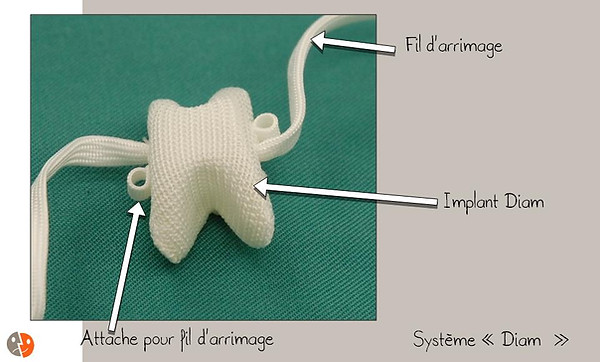
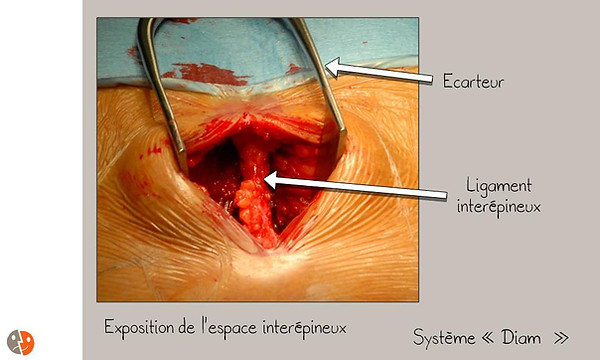
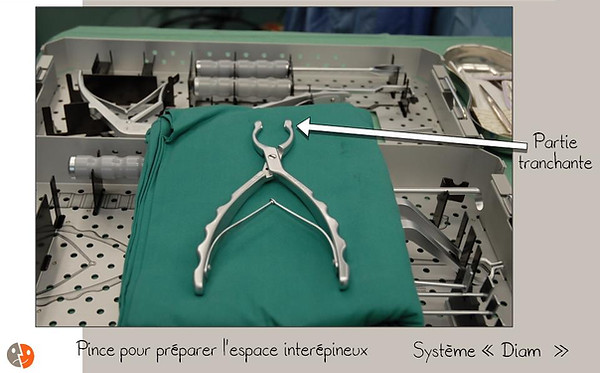

Aperius
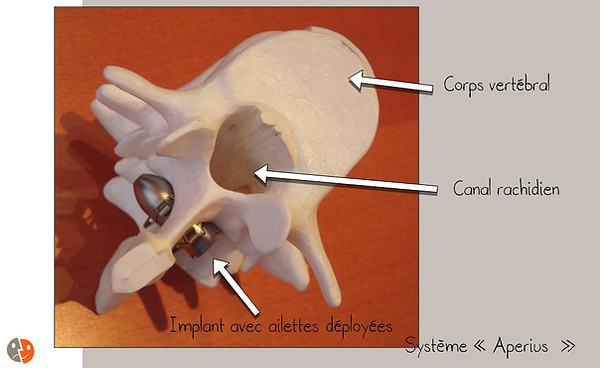
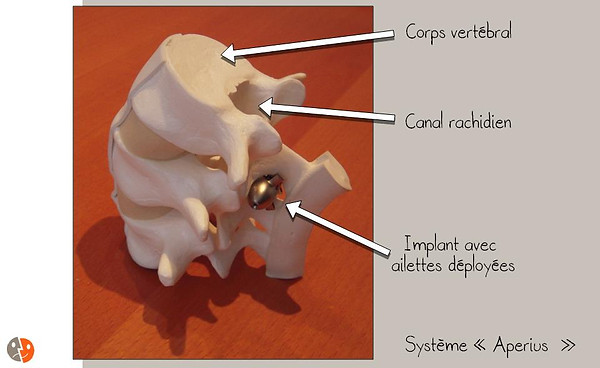
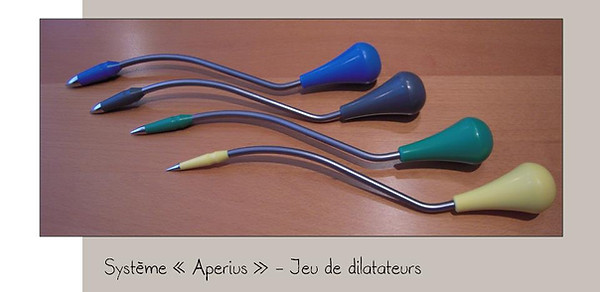
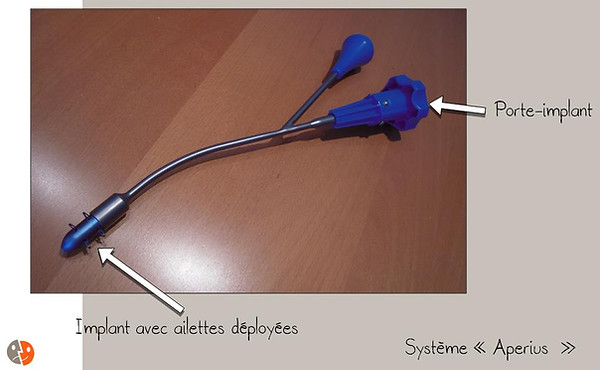
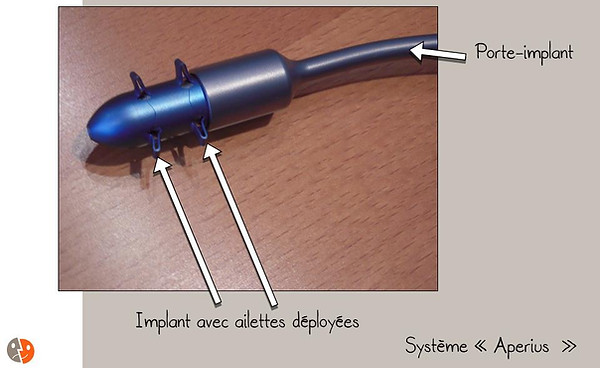



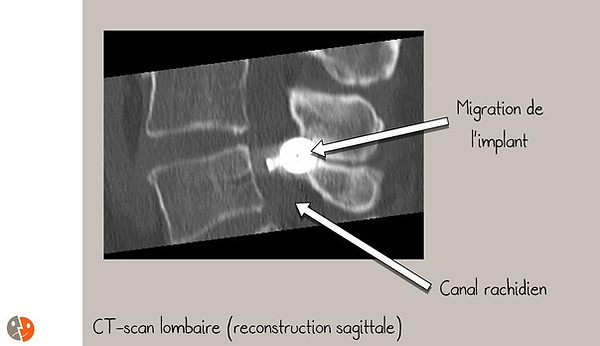
Complications:
-
Intracanal migration of the implant. If a large hemilaminectomy has been performed previously, there is a low risk of implant migration into the spinal canal. This causes compression of the dural sac and roots and usually requires reoperation to remove the implant and replace it with another with different supports such as the Bacjac.
-
CSF fistula. If the yellow ligament is very thin and the epidural fat is not very important, a fin of the Aperius could erode the yellow ligament, then the dura and the arachnoid and cause a fistula. This is hardly possible except in L5-S1.
-
Fracture of the spinous process. The pressure exerted on the spinous process is important and could cause a fracture of this one, particularly in the event of osteoporosis. The Aperius resting on the base of the thorny plant and close to the start of the blades, this is very rare because the bone is fortunately more resistant in this place.

Bacjac



